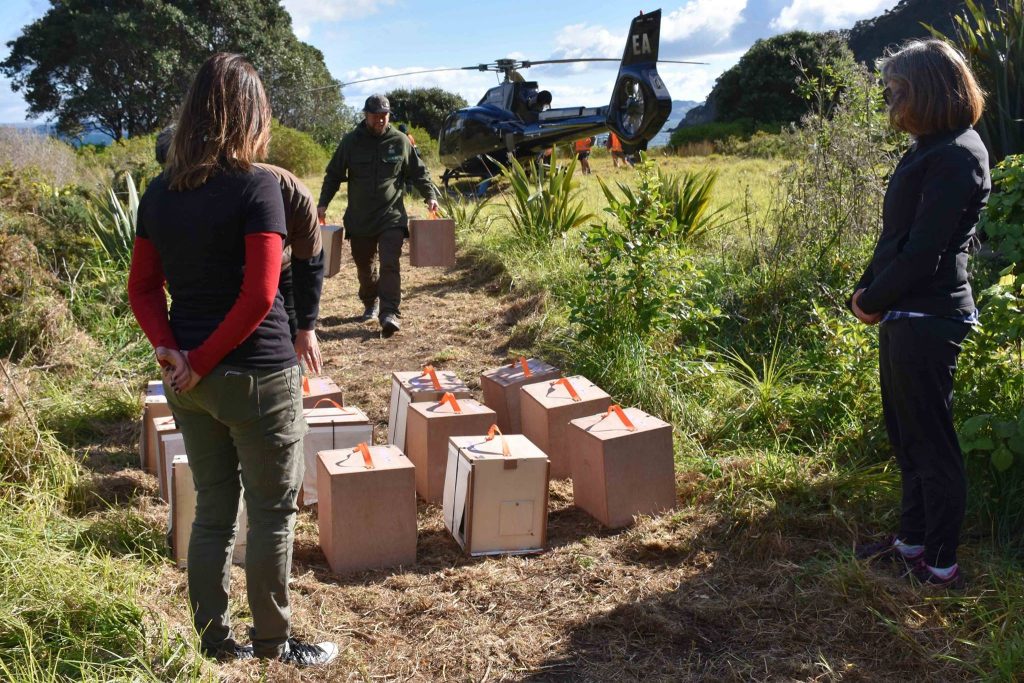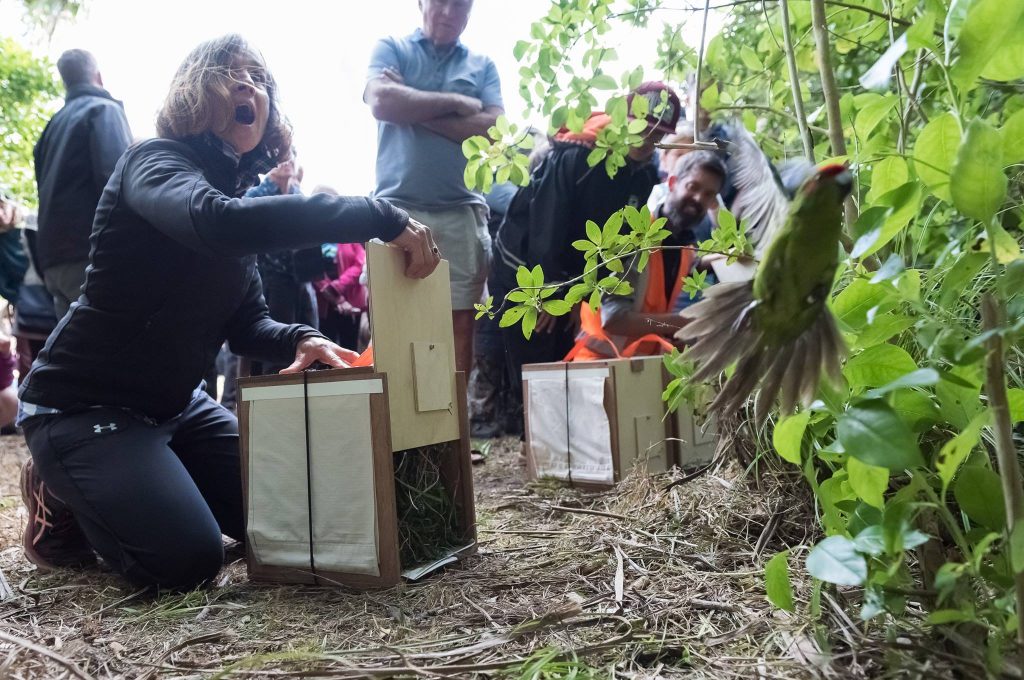The Return of Kākāriki to Northland
Forty kākāriki have been released in the Far North this winter, as our Northland Advocate Dean Baigent-Mercer explains.
Project Island Song is a shared vision for the restoration of an archipelago rich in native flora and fauna for all to enjoy.
The seven wonders of Ipipiri are the pest-free islands located in the eastern Bay of Islands. Years of work between local hapū Ngāti Kuta and Patukeha, the Department of Conservation, landowners, and community group the Guardians of the Bay of Islands saw these seven islands become pest-mammal free in 2009.
WATCH: A 360 look at the kākāriki release. Click and drag the video to scroll around.
Recent years have seen pāteke/brown teal, tīeke/saddlebacks, pōpokotea/whitehead, and toutouwai/robins released. And they haven’t wasted any time in breeding.
It’s now common to see tīeke moving in groups and hunting bugs on the leggy trunks of kānuka.
This winter, it’s the red-crown parakeet’s turn. Up to 40 kākāriki have been bought over from Hauturu/Little Barrier Island for release on Ipipiri.

The kākāriki arrive on Moturua (Photo by Darren Markin for Project Island Song)
Kākāriki frequently feed on the ground and nest in dry holes in trees and banks. On the mainland, rats, stoats, cats, and possums wiped them out, and logging and burning of native forests destroyed ancient trees favored for nesting.
The last mainland Northland kākāriki were heard in the early 1980s. Fortunately, kākāriki remained on a few pestfree islands near Whangarei, and some occasionally fly across to the mainland.
Except for pāteke, the native bird species re-introduced so far will not leave the islands, but with the wide-ranging red-crowned kākāriki there is no guarantee they will stay put.

The kākāriki are released (Photo (C) Dean Wright for Project Island Song)
Kākāriki can have multiple broods from the start of spring to the end of summer, so the aim is to create viable island kākāriki populations that head over to the adjacent coastal land.
To prepare, a comprehensive halo of coastland pest control initiatives from Tapeka Point to Rakaumangamanga/Cape Brett has been established.
Inland, Russell State Forest is also set to come under a 20-year pest control management plan.
Before the pests were killed, replanting was well under way. For years, local volunteers at the Kerikeri Shadehouse, a native plant restoration nursery supported by the Far North branch of Forest & Bird, have been growing ecosourced native plants from seed.
Forest & Bird member and Old Blue recipient Rod Brown has coordinated work at the nursery, growing and transporting the plants out to the islands and plantings. More than 35,000 native plants have been reared and planted out on Waewaetorea, Moturua, and Urupukapuka islands. These include pōhutukawa, taraire, tītoki, tūrepo/milk tree, and rare northern coastal trees, tawāpou and coastal maire along with kakabeak and purple flowered koru.
Many of these plant species have taken a hammering by possums throughout Northland.
The islands are open sanctuaries, and keeping them pest free has not been without its challenges. Recent incursions include a pet cat swimming ashore from a yacht and rat arrivals. One rat stowed away on a dingy and was dispatched on a beach thanks to the lightening reflexes of a volunteer armed with a spade.
Last summer’s surprise was the discovery of a Pacific gecko, but most missing native species need a hand, and Project Island Song has 16 on the wish-to-return list.
